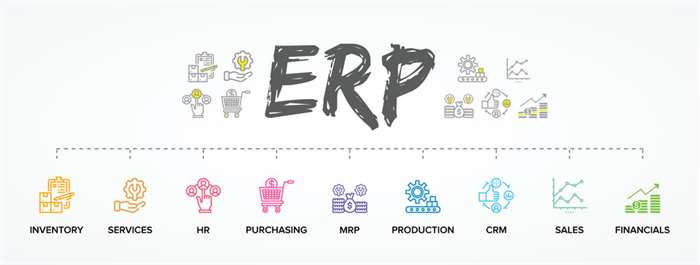But risk scores permit practices to raised handle their sufferers and extra effectively use the assets available. Risk urge for food is described as “the amount of threat that an organization is keen to merely accept to attain its goals.” Through this definition, threat appetite introduces an idea that, while risk can impact an enterprise’s success, so can threat aversion. The world is stuffed with danger, and organizations must determine what risk to accept to attain its aims and what danger requires further actions to avoid, mitigate or switch.
- Risk urge for food is described as “the amount of threat that a company is prepared to accept to achieve its aims.” Through this definition, risk appetite introduces an idea that, while risk can influence an enterprise’s success, so can danger aversion.
- After all threat sharing, threat transfer and danger discount measures have been implemented, some danger will remain since it is nearly impossible to remove all danger (except by way of danger avoidance).
- In household medicine, we handle sufferers with situations that vary widely of their medical complexity.
- This can be carried out by weighing the chance of an occasion occurring in opposition to the price to implement security and the benefit gained from it.
A company is an effective instance of threat sharing — a selection of traders pool their capital and every solely bears a portion of the chance that the enterprise could fail. Avoidance is a method for mitigating danger by not taking part in actions that may negatively have an result https://www.globalcloudteam.com/ on the group. Not investing or beginning a product line are examples of such activities as they keep away from the danger of loss. Risk analysis entails establishing the likelihood that a risk occasion might occur and the potential consequence of every event.
Commit To Reducing Threat
(See “Risk-stratification algorithm.”) This approach is loosely based mostly on the American Academy of Family Physicians' Risk-Stratified Care Management Rubric). This article will explain how our follow makes use of a structured, algorithmic approach to determine our patients' threat levels and drive higher care team support for our sufferers. In family medicine, we handle sufferers with circumstances that vary widely in their medical complexity.

You should reevaluate risk scores frequently and in addition as you become conscious of modifications within the patient's status. For example, an ED admission, a care-gap report from a payer, or a chance encounter with a patient at your child's baseball game could immediate you to vary a threat rating. While adopting a threat management standard has its benefits, it is not with out challenges. The new commonplace won't simply match into what you are doing already, so you could have to introduce new ways of working. Committing to high quality risk management may help you create a steady business that prepares for sudden occasions. Based on our example above, the lowest danger stage you can get is 1 (1 x 1), and the very best threat level you would get is sixteen (4 x 4).
Danger Appetite Vs Threat Tolerance: What Is The Difference?
For instance, a affected person with diabetes whose A1C is 9.2 could be categorized as high risk. However, think about that the patient had an A1C of 12 earlier in the 12 months but has since begun exercising, misplaced 30 kilos, and started taking his or her treatment as prescribed. We additionally think about several additional factors that we refer to as “Escalation/de-escalation criteria” to fine-tune the ultimate threat rating. Our practice makes use of a two-step algorithm to discover out a patient's threat level based mostly on goal data and subjective clues.

To evaluate danger, evaluate the extent of threat for varied occasions towards your risk standards. You must also check if your existing danger management methods are enough to merely accept the danger. This methodology of risk administration attempts to attenuate the loss, somewhat than utterly eliminate it. While accepting the danger, it stays targeted on keeping the loss contained and preventing it from spreading. As part of the Comprehensive Primary Care Plus program, we get detailed utilization data on enrolled sufferers. Between the second quarter of 2017, once we began risk stratification, and the third quarter of 2018, overall Medicare spending on these sufferers decreased virtually 23 % and their ED utilization fell 19 %.
For the aim described on this article, “risk” refers to medical danger, or the probability of an antagonistic clinical consequence. Sometimes clinical threat is obvious; for instance, you'll expect a affected person with rheumatoid arthritis to have more complications sooner or later than a affected person with osteoarthritis. Other times, danger evaluation comes all the method down to your “gut feeling” about what's going on with the patient.
Threat
Assessing the well being risk of your sufferers can yield improvements in efficiency and use of sources. Consider these steps to help determine, analyse and evaluate risks in your business. Simplify how you manage danger and regulatory compliance with a unified GRC platform fueled by AI and all of your data. When dangers are shared, the potential for loss is transferred from the individual to the group.

The Cost of a Data Breach Report explores monetary impacts and safety measures that can assist your organization avoid a data breach, or in the occasion of a breach, mitigate prices. Discover how a governance, threat, and compliance (GRC) framework helps an organization align its information know-how with enterprise aims, while managing threat and assembly regulatory compliance necessities. Repeating and frequently monitoring the processes may help guarantee most coverage of identified and unknown risks.
Low Threat
Risk evaluation compares the magnitude of each danger and ranks them in accordance with prominence and consequence. Your technique for managing danger may be extra than simply deciding whether to simply accept the chance or not. If your business is a half of a much bigger supply chain that involves retailers, distributors or main producers, you can spread the risk across a number of areas. This desk indicates which classifications of data are allowed on a selection of commonly used Stanford University IT companies. Speed insights, minimize infrastructure prices and improve effectivity for risk-aware selections with IBM RegTech.
Risk administration is the method of figuring out, assessing and controlling financial, legal, strategic and security risks to an organization’s capital and earnings. These threats, or dangers, may stem from a extensive variety of sources, including financial uncertainty, authorized liabilities, strategic administration errors, accidents and natural disasters. It may risk levels definitions take some further time, but you will need to incorporate the care group's perception of danger. The practice should be committed to a team-based method that values the input of nonphysicians and a commitment to developing and adhering to structured workflows and processes.
Info Safety
To cut back danger, an organization needs to apply sources to attenuate, monitor and management the impact of negative occasions whereas maximizing optimistic events. A constant, systemic and integrated method to risk management may help determine how best to identify, handle and mitigate significant risks. This weblog post will demystify the risk urge for food and risk tolerance terms and clarify how one can integrate these ideas inside your risk management framework. Risk mitigation refers to the process of planning and growing strategies and options to cut back threats to project goals. A project staff might implement risk mitigation strategies to identify, monitor and evaluate dangers and penalties inherent to completing a specific project, such as new product creation. Risk mitigation additionally contains the actions put into place to cope with issues and effects of these issues relating to a project.
When applied appropriately, these terms are fairly distinct and play a significant position in the balancing act of “taking risk” and “controlling risk” for reaching corporate technique and aims. Answering this query involves the appliance of risk urge for food and risk tolerance. It's important to understand the risks to your business and find ways to minimise them. A threat management plan helps you to do this by detailing the way you deal with risks to your small business.
Risk stratification has enabled our practice to provide risk-stratified care management. Statistically, the extent of downside threat may be calculated as the product of the likelihood that hurt occurs (e.g., that an accident happens) multiplied by the severity of that harm (i.e., the common quantity of harm or extra conservatively the utmost credible amount of harm). In follow, the risk matrix is a useful approach where both the likelihood or the harm severity cannot be estimated with accuracy and precision. Conceptually, danger tolerance units the boundaries of risk taking that the organization will not transcend in pursuit of its long-term objectives. To help boundary setting, measures similar to key threat indicators are used to align with danger tolerance limits, making certain that the group stays inside its risk urge for food and on observe to attain its goals. Risk varies amongst organizations, and accordingly, every organization has its personal risk urge for food that reflects its internal and exterior context.
The likelihood of hurt occurring could be categorized as 'certain', 'doubtless', 'potential', 'unlikely' and 'uncommon'. However it should be considered that very low probabilities is in all probability not very reliable.
To set your danger criteria, state the extent and nature of risks which might be acceptable or unacceptable in your workplace. Our risk assessment template provides an instance of a risk degree information that will assist you evaluate dangers. Risk identification is the process of figuring out and assessing threats to a company, its operations and its workforce. For instance, risk identification might embody assessing IT security threats such as malware and ransomware, accidents, natural disasters and other potentially dangerous occasions that might disrupt enterprise operations. At the broadest degree, risk administration is a system of individuals, processes and know-how that permits a company to ascertain objectives according to values and dangers.
Ideally, these three avenues are employed in live performance with one another as part of a comprehensive strategy. If an unforeseen event catches your group unaware, the impact might be minor, corresponding to a small impression on your overhead costs. In a worst-case scenario, although, it could be catastrophic and have severe ramifications, corresponding to a significant monetary burden or even the closure of your business. Thomas, Bratvold, and Bickel[16] demonstrate that danger matrices produce arbitrary threat rankings. Rankings depend on the design of the chance matrix itself, such as how large the bins are and whether or not one makes use of an rising or decreasing scale. Stanford has classified its information belongings into risk-based categories for the purpose of determining who is allowed to access the data and what security precautions should be taken to protect it towards unauthorized access.